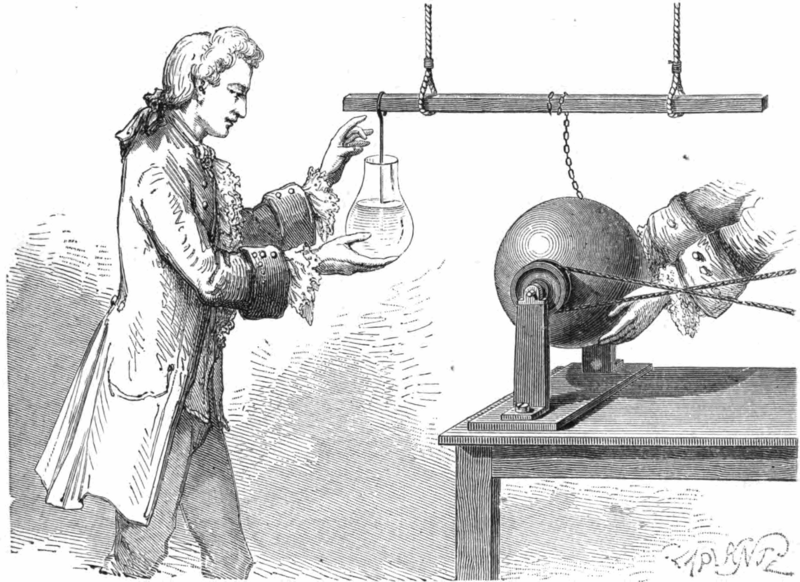Image: Cuneus discovering the Leyden jar

Description: Artist's conception of the discovery of the Leyden jar. In 1746, Andreas Cuneus, an assistant in the laboratory of Pieter von Muschenbroek in Leyden, attempts to "condense" electricity in a glass of water. The rotating glass sphere (right) is an electrostatic machine. The static electricity generated by the hands rubbing on it is transferred through the chain to the suspended metal bar, and from it via the hanging wire into the glass of water. The glass acted as a capacitor, and a large charge built up in the water, and an equal charge of the opposite polarity built up in Cuneus hand holding the glass. When Cuneus reached up to pull the wire out of the water, he got a severe shock, much worse than an electrostatic machine could give, because the amount of charge stored was much larger than the terminal of an electrostatic machine could store. Cuneus took two days to recover. Musschenbroek was also impressed by the powerful shock he received from the device, writing, "I would not take a second shock for the crown of France". Reports of the experiment were widely circulated, and scientists began to investigate the charge storage ability of these "Leyden flasks". Eventually the water was replaced by foil coatings on the inside and outside of the jar to store the charge.
Title: Cuneus discovering the Leyden jar
Credit: Downloaded August 12, 2013 from Augustin Privat Deschanel (1876) Elementary Treatise on Natural Philosophy, Part 3: Electricity and Magnetism, D. Appleton and Co., New York, translated and edited by J. D. Everett, p. 570, fig. 382 on Google Books
Author: The drawing seems to be signed 'Laplante' in the lower right corner
Usage Terms: Public domain
License: Public domain
Attribution Required?: No
Image usage
The following image is a duplicate of this image (more details):
There are no pages that link to this image.

